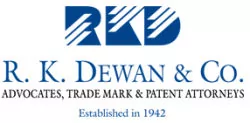It is interesting to note that the essence of 'trademarking' is to create an inherent association between the product and the brand. A consumer, when he looks at a product on the retail shelves, is more inclined to sub-consciously create an 'association' with any brand within his sphere of knowledge instead of focusing on the visual differences.
In the case of Shambhu Nath & Brothers &
Ors. v. Imran Khan, wherein both the parties are
manufacturers of inter alia electrical fans of various
kinds, Shambhu Nath was trading inter alia under the registered
trademark ![]() .Imran Khan started using the trade mark
.Imran Khan started using the trade mark ![]() which caused Shambhu Nath to sue him for infringement and passing
off. Interestingly, the Court noted that SNJ were the initials of
Mr. Shambhu Nath Jaiswal himself and Imran Khan did not provide any
explanation for using these very letters in his mark!
which caused Shambhu Nath to sue him for infringement and passing
off. Interestingly, the Court noted that SNJ were the initials of
Mr. Shambhu Nath Jaiswal himself and Imran Khan did not provide any
explanation for using these very letters in his mark!
Imran Khan argued that Shambhu Nath had rights only to the stylised form in which the word TOOFAN was written and therefore he did not have exclusive rights to the word TOOFAN.
The High Court of Calcutta agreed that registration gave rights to the mark as a whole. However, if a prominent part of the registered trade mark is used by another, this would amount to infringement as in the present case. In a trade, if a mark has come to be identified with a particular person, then use of that trademark by another person in the same trade will be infringement.
The 'takeaway' from this case is that while considering infringement between 2 trademarks in the same line of activity one should focus on the degree of similarity rather than the technical differences. In every case if the points of similarity are greater than the technical differences a practical approach will suggest that the registered mark is infringed.
Compiled by: Adv. Sachi Kapoor | Concept & Edited by: Dr. Mohan Dewan
The content of this article is intended to provide a general guide to the subject matter. Specialist advice should be sought about your specific circumstances.

